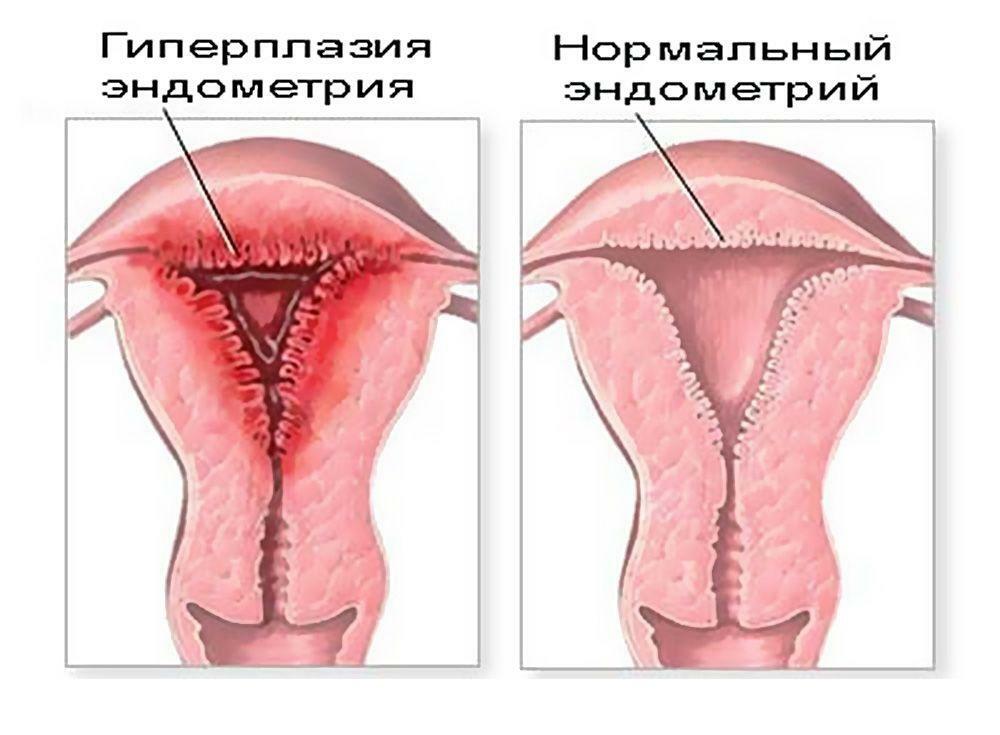Runny nose and frequent sneezing, despite its insignificance, greatly reduce the quality of life. If these symptoms disturb a person regularly, then it is definitely not worth writing off them on the characteristics of the body, but you should look for the cause. If the signs appeared against the background of fever, then the diagnosis will not cause difficulties - a respiratory infection. But often there is a runny nose and sneezing on the background of absolutely normal body temperature. The reasons for this ailment are discussed in the article.

Sneezing and runny nose without
temperature material Content
- 1 Vasomotor rhinitis
- 1.1 Development and symptoms of vasomotor rhinitis
- 1.2 Treatment of vasomotor rhinitis
- 1.3 Video - Treatment of vasomotor rhinitis
- 2 Allergic rhinitis
- 2.1 Types of allergens and symptoms
- 2.2 recommendations in the imagelife
- 2.3 Video - Allergic rhinitis. Where does it come from?
- 2.4 Treatment
- 2.5 Allergen-specific immunotherapy( ASIT)
Vasomotor rhinitis
Neurogenic or vasomotor rhinitis is one of the most difficult to diagnose and treat. Its cause is the damaged innervation of the nasal mucosa. It is richly equipped with vessels that provide warming of the inhaled air. The narrowing and expansion of these small capillaries of the mucosa is regulated by the autonomic nervous system. It depends on the temperature of the environment - if it's cold, the blood vessels are filled with blood for better warming of the air. It happens in a healthy person.
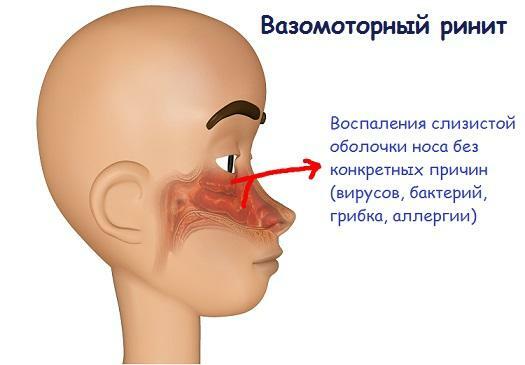
What is vasomotor rhinitis
The regulation of the tonus of the capillaries of the nasal mucosa can be severely impaired in a number of conditions on the basis of which the classification of vasomotor rhinitis is constructed:
- Drug - antipsychotics, antihypertensive, oral contraceptives, nasal drops with adrenomimetics.
- Hormonal - during pregnancy, during puberty, with endocrine pathologies.
- Reflective - cold, food.
- Psychogenic - with neuroses, stress.
- Idiopathic - for no apparent reason.
Vessel dysfunction does not occur in all people and it is not known for certain why a number of women do not experience symptoms of vasomotor rhinitis during pregnancy, but one in five suffers from a runny nose during all trimesters.
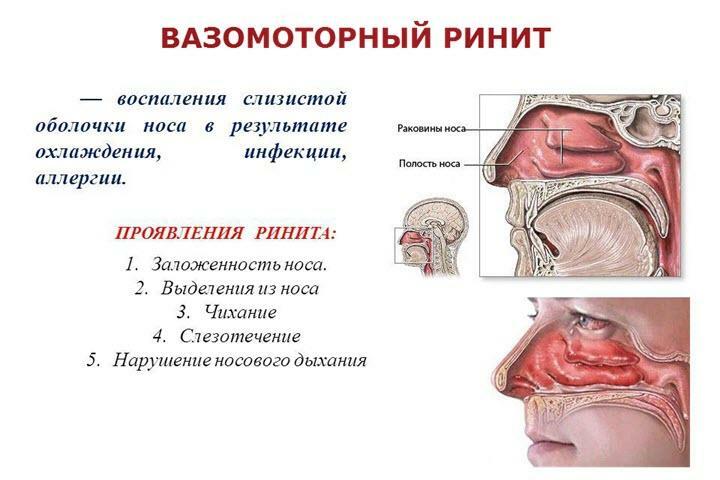
Symptoms of vasomotor rhinitis
Development and signs of vasomotor rhinitis
In the pathogenesis of symptoms of vasomotor rhinitis, the following matters:
- mucosal vasodilation at rest, for no reason;
- mucosal edema;
- as a consequence, sweating the liquid part of the blood through the wall and the formation of a large amount of mucus.
The person develops:
- nasal congestion, difficulty breathing;
- discharge from the nasal cavity or flowing down the back wall of the pharynx;
- sneezing.
Important! Itching in the nose with vasomotor rhinitis is very rare, this symptom should alert you to allergic rhinitis.
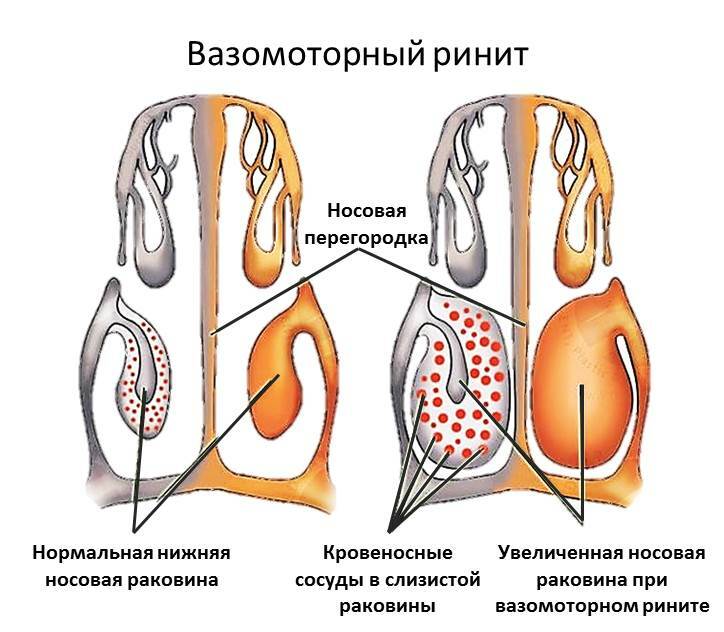
Scheme of vasomotor rhinitis
At the same time, the general state of a person practically does not suffer, since vasomotor rhinitis does not have a bacterial or viral infection. This is a purely neurovegetative problem. But with pronounced night nasal congestion, the quality of sleep can suffer, which will eventually affect a person's condition in the form of daytime drowsiness, fatigue.
The diagnosis of vasomotor rhinitis can be correctly established only after excluding an allergic rhinitis, for which allergic tests are carried out. Directing for surgery without this examination can lead to unnecessary and ineffective interventions in a person with undiagnosed allergy.
Treatment of vasomotor rhinitis
Vasoconstrictive drops are actively used in the first stage, before the diagnosis. Often, people abuse these means, exacerbating the situation. When burdening adrenomimetics( Xylometazoline, Naphthyzine) for longer than seven days, the vessels lose the ability to respond adequately to their own innervation. It is constantly expanded and narrowed only in response to the next instillation. Therefore, their use is shown only in rare cases, once, when severe symptoms of rhinitis interfere with work.
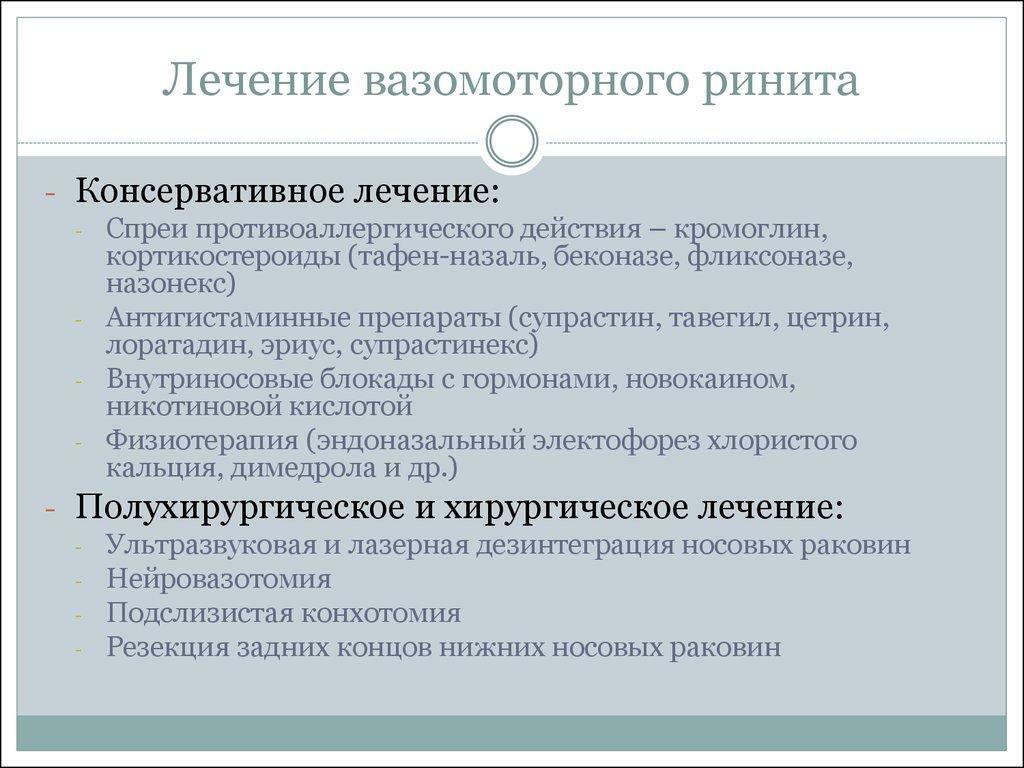
Treatment of vasomotor rhinitis
There is no clear algorithm for treating vasomotor rhinitis, due to unclear mechanisms of occurrence. All therapy is symptomatic or restorative. Since the dysfunction of the autonomic nervous system plays an important role, its normalization is actively applied with the help of:
- hardening;
- sports exercises 2-3 times a week;
- increased stress resistance.
Of medicaments are assigned:
| preparations Group | Title | Image |
|---|---|---|
| Local blockers histamine receptors | azelastine, levocabastine | 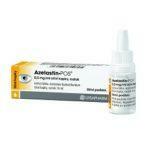 |
| Intranasal glucocorticosteroids | Nazoneks, Rinikold | 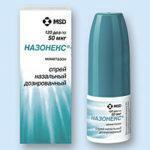 |
| Local mast cell stabilizers | kromogeksal 2% spray | 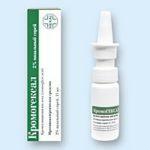 |
| Local M-cholinolytics | Ipratropium bromide 003% |  |
Important! When using local glucocorticosteroids, you should remember the slow onset of the effect, after 1-2 months, and do not give up quickly.
In case of ineffectiveness of conservative methods within 6 months, surgical intervention is recommended. The surface layer of the mucous membrane is destroyed along with the dilated vessels. Modern interventions are characterized by low invasiveness, low risk of side effects and small blood loss:
- vasotomy;
- electrocoagulation;
- ultrasonic disintegration;
- cryodestruction;
- radio frequency reduction.
Video - Treatment of vasomotor rhinitis
Allergic rhinitis
Every third person in Europe and the USA suffers from an allergic rhinitis today. Its distribution in industrial countries is associated with a large number of affecting sensitizing substances.
Allergic rhinitis is based on the effects of an allergen. This substance, which in other people does not cause such a reaction, and the allergic provokes a cascade of immune reactions. In the body of a sensitized person antibodies to a specific allergen are formed. Immunoglobulins, interacting with the antigen, form an immune complex that triggers the release of mast cells from biologically active substances:
- histamine;
- bradykinin;
- cytokines;
- leukotrienes.

What is the allergic rhinitis
The mechanism of action of these substances is vasodilation, sweating out of the liquid and the formation of a large amount of watery mucus, the appearance of itching and sneezing. The allergy does not depend on the dose of the antigen that has entered the body: even a microscopic amount can cause a violent reaction. It is only the individual immune response that matters.

Pathogenesis of allergic rhinitis
Allergen types and symptoms
Symptoms of an allergic rhinitis make it possible to put a preliminary diagnosis with high accuracy:
- itching in the nose;
- frequent paroxysmal sneezing;
- difficulty breathing;
- discharge from the nose.
Almost always it is possible simultaneously with a rhinitis to find out the symptoms of allergic conjunctivitis, such as itchy eyes and watery eyes.
Symptoms of allergic rhinitis
Allergens that can cause a reaction can be divided into:
- antigens of the environment( pollen of plants);
- antigens of the dwelling( mites household, mold, animals, insects);
- professional antigens.
Pollen allergens are one of the most significant in the development of rhinitis. This is due to the abundance of plants and the difference in the time of their flowering. This leads to the appearance of several peaks of allergic rhinitis, depending on the causative plant.
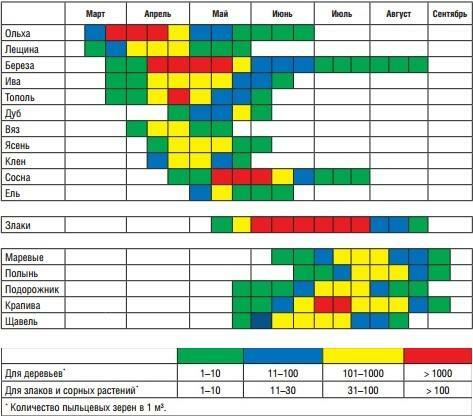
Allergy aggravation by months
Household allergens of human dwellings are diverse. Up to 80% of the dust is made up of household mites of various kinds, which are the main provoker of household allergies. Rarely occurs sensitization by cat and dog allergens.
A rare sensitivity to cockroach antigens, which has survived only in some social groups, can cause severe rhinitis, combined with bronchial asthma.
There are two main forms of allergic rhinitis, which should be distinguished:
| Clinic | Seasonal rhinitis | perennial rhinitis |
|---|---|---|
| Nasal discharge | Many watery | Mucous, thicker |
| Nasal congestion | Transient | Constant, the most disturbing symptom, mostly at night |
| Sneezing | Often | More rarely |
| Smell reduction | Rare | Often |
| Symptoms of conjunctivitis | Very often | Rare |
| The association of appearance and disappearance with time | Clear: spring - trees, early summer - grains, later summer - weeds | Fuzzy: exacerbations in raw autumn |
| Influence of housing conditions | No | Clearly |
| Weather effect | In rainy weather relief | Cold wet weather worsens the condition |
Important! According to the forecasts of scientists, in 2020 half of the young population will suffer from allergic rhinitis.
Recommendations for a way of life

Classification of allergic rhinitis
Allergy is a feature of immunity and it is difficult to cure it permanently. Important is the elimination of the antigen, avoiding it. Effectively helps in this washing of the nasal cavity with saline solutions. Additional measures to prevent contact with the allergen depend on its specific type.
Pollen allergens:
- More time to be indoors for the flowering period.
- Only open the windows at night and in rainy weather, when the amount of pollen is less.
- At the time of flowering plants provocateurs try to leave their place of residence, for example, go on vacation.
- Do not take phytopreparations, folk medicine methods, plant-based hygiene products.

Common allergens
Home dust allergens:
- Change of down, feather pillows and blankets for synthetics - sintepon.
- Regular weekly washing of bed linen, pillows, blankets.
- Lingerie freezes or regularly after washing to air - this causes the death of ticks.
- Use washable covers on upholstered furniture.
- Remove from the bedroom heavy curtains, carpets, soft toys.
- Instead of carpeting use easily washable - linoleum, tile.
- Regular wet cleaning using detergent vacuum cleaners.
- Maintain a high humidity in the room.
- To process furniture, curtains with acaricidal means.
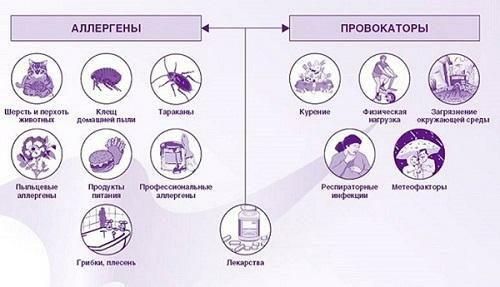
Allergens and provokers
Pets:
- Do not allow animals to visit the sleeping room.
- Regularly wash the animal, wash hands after contact with it.
- Do not wear clothes made of fur or wool.
- Do not visit circuses and zoos.
Moldy allergens:
- Use mold-destroying solutions.
- After visiting the bathroom, wipe all surfaces dry.
- Dry clothes on the street or in a well-ventilated place.
- Do not participate in the harvesting of the garden in autumn, as in the piles of leaves accumulate mold fungi.
- Do not eat foods that use molds - beer, champagne, hot cheese, sour-milk products.
Video - Allergic rhinitis. Where does it come from?
Treatment of
Therapy for allergic rhinitis includes tablets and topical products - intranasal drops and sprays.
| group | preparations | preparation | preparation | image | image | |
|---|---|---|---|---|---|---|
| application Antihistamine tablets | Loratadin | 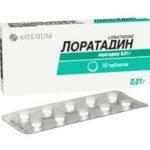 | 10 mg once a day | |||
| Desloratadine |  | 5 mg once a day | ||||
| Cetirizine | 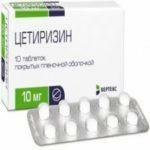 | 10 mg once a day | ||||
| Rupatadine | 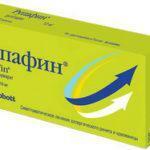 | 10 mg once a day | ||||
| Antihistamine localfunds | Azelastine spray |  | 1 dose in each half of the nose 2 times a day | |||
| Levocabastine spray | 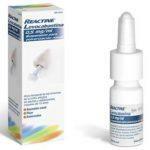 | 2 doses in each half of the nose 2-4 times a day | ||||
| Corticosteroids local | Beclomethasone spray | 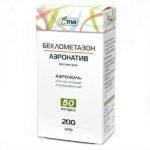 | 50 μg 2-3 times a dayand | |||
| Mometasone spray | 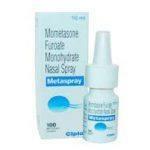 | By 100 mcg once a day | ||||
| Kromones in drops | Cromohexal |  | At 1 dose 3-4 times daily |
Important! Oral glucocorticosteroids, such as prednisolone, are used in allergic rhinitis as a "therapy of despair."They should not be used in all patients.
Allergen-specific immunotherapy( ASIT)
ASIT is a radical way to get rid of allergic rhinitis. The procedure consists in the gradual administration of microscopic doses of the guilty allergen in human blood. Gradually, the amount of antigen added is increased. Parallel to this, desensitization of the organism takes place.
The effectiveness of ASIT depends on the degree of immune reactivity of a particular organism. Immunotherapy promotes a sharp weakening of symptoms or their complete disappearance for many years. It is proved that the ASIT prevents the development of bronchial asthma in the future.
Important! The earlier the ASTI has been performed since the diagnosis was made, the better the results can be achieved.
Allergens are administered subcutaneously and sublingually. The earliest age in which it is possible to carry out immunotherapy is 5 years. The possibility of ASIT should be discussed with every patient, even with a good response to conservative therapy. It should be remembered that if in the future a person comes to severe rhinitis with progressive asthma and lack of effect from medical methods - this will become a contraindication for ASIT.


